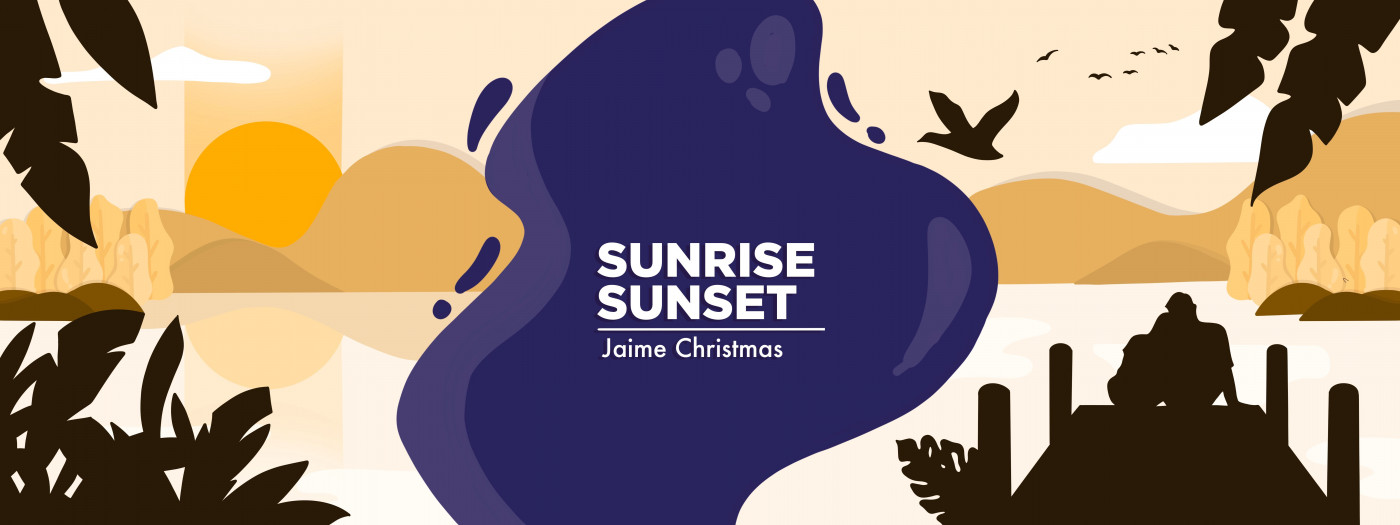Finding a Path to Wellness for Diagnosed Patients

Having a chronic illness is never easy, both for the sufferers and their caregivers. My name is Jaime Christmas, and my husband, Aubrey, started feeling unwell in late 2012. It all started with numbness in his fingertips, but it wasn’t until he lost his taste for food that he went to a doctor. He was fortunate that his general practitioner took things a step further and referred him to the right specialist.
The same cannot be said for many people with amyloidosis who aren’t diagnosed till much later, when progression has already taken a toll. After a biopsy in mid-2013, Aubrey was diagnosed with hereditary ATTR amyloidosis. The results caught us both a little off guard because he underwent a blood test to confirm if he carried the genetic strain a few years prior, and the results were negative.
Perhaps it was still in the formative years of diagnosis and testing, but the negative result was a reason to celebrate. Until it wasn’t.
This turn of events threw a spanner in the works for the whole family. As we lived overseas, all our family members were away from us, so the only people we could rely on for emotional support were our friends. Nonetheless, within the four walls of our home, Aubrey, the children, and I were left to fend for ourselves.
This situation is not unique for rare disease sufferers and their families. The feeling of isolation, of being unsupported, is familiar. Because there are fewer of us due to the unique nature of the condition compared with more prevalent and typical illnesses, there exists a blatant disregard for the fundamental needs of people with rare diseases.
That being said, awareness and education for rare illnesses are improving. There has been increased input from patients themselves, voicing their challenges and pushing for positive change. Platforms such as Bionews, the parent company of this website, highlight the struggles rare patients and their caregivers face. Rare disorder organizations, such as the National Organization for Rare Disorders (NORD), European Organisation for Rare Diseases (EURORDIS), and Rare Disorders New Zealand (RDNZ), provide information on each condition and where patients can source reliable details of their disease.
Amyloidosis patients now have many avenues to read up and educate themselves on the disease and how to get connected to a local support body. Back in 2013, when Aubrey was diagnosed, information on hATTR amyloidosis was scarce. Both of us are so glad that, at least on this front, patients and caregivers now can feel more supported in their journey.
Nonetheless, a lot more can be improved. Rare disease sufferers still face a less than accurate diagnosis of the condition. My husband still experiences an uncoordinated clinical approach, to the point where some specialists are afraid to take him on as a patient, either from the lack of experience or a worry that he will continue to deteriorate under their care. It is sad to feel like no one wants you because you have been placed in the “too hard” basket.
We both empathize with many medical professionals who may not have heard of a disease but are made to see patients via referral. However, we feel that these clinicians are the best people to push for treatment strategy optimization to facilitate effective and efficient management for future rare patients.
The takeaway message that Aubrey and I have learned is that we need to advocate for ourselves. Amyloidosis patients, you know your body best. You understand better than anyone how you feel, either physically or mentally.
Know that sometimes you need to speak up and ask for help. Both you and your doctor are on a learning path. Your doctor must be your best advocate, and this can happen when respect and understanding exist between the two of you. However, if things still don’t work out, try as you may, find another doctor.
The best way for you to feel connected is to seek out other patients diagnosed with the same condition. A shared journey becomes less lonely, and you will become better at handling your situation over time.
Note: FAP News Today is strictly a news and information website about the disease. It does not provide medical advice, diagnosis, or treatment. This content is not intended to be a substitute for professional medical advice, diagnosis, or treatment. Always seek the advice of your physician or other qualified health provider with any questions you may have regarding a medical condition. Never disregard professional medical advice or delay in seeking it because of something you have read on this website. The opinions expressed in this column are not those of FAP News Today or its parent company, Bionews, and are intended to spark discussion about issues pertaining to familial amyloid polyneuropathy.








Leave a comment
Fill in the required fields to post. Your email address will not be published.